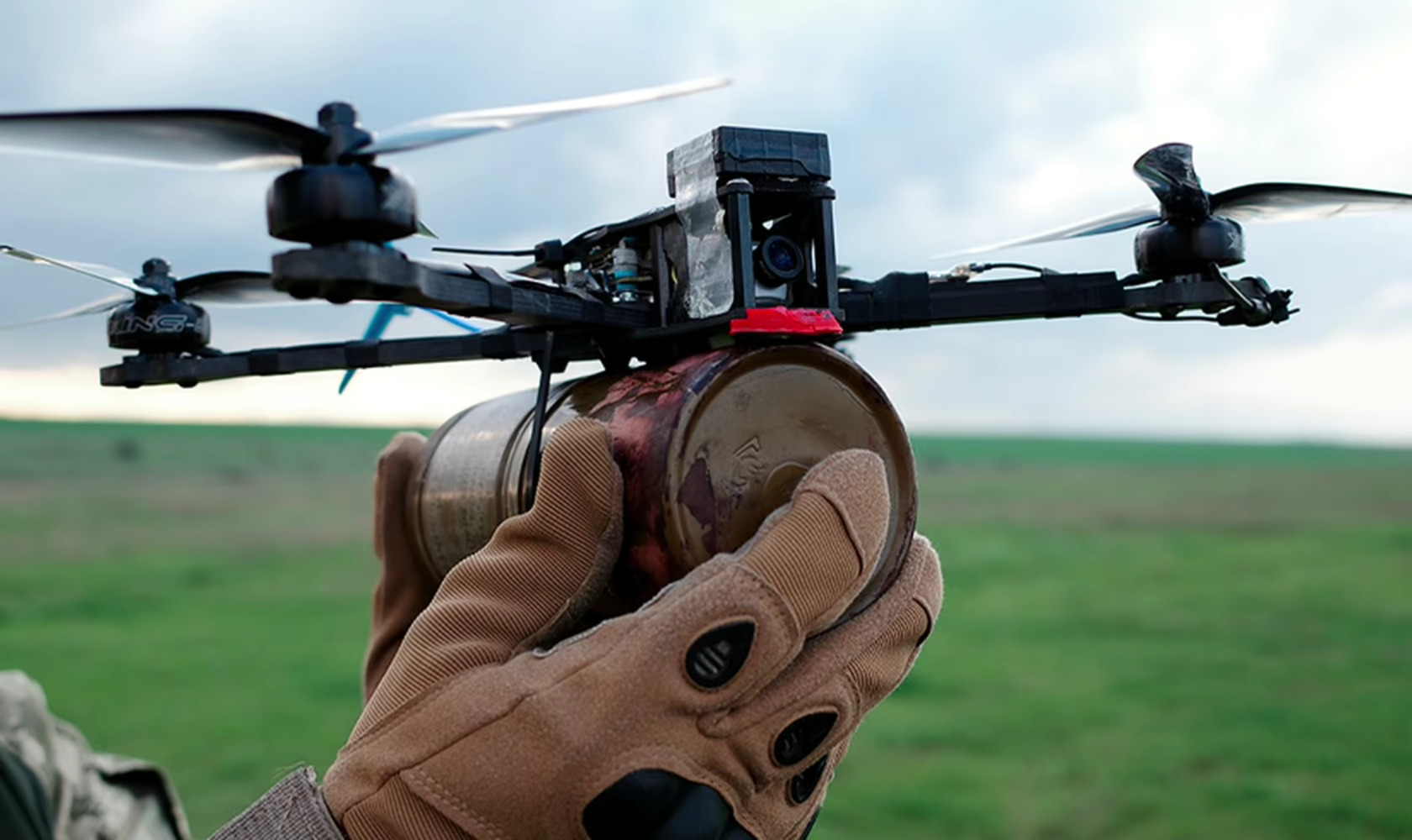The destruction of Ukraine’s artillery inventory, the shortage of ammunition in the US and Europe after having donated Kyiv from their armories, and the inability to ramp up production owing to issues with their defense industrial bases have led to the Armed Forces of Ukraine (AFU) nearly substituting the deficit with kamikaze drones.
First-person view (FPV) unmanned aerial vehicles (UAV) are the new artillery for Ukraine. Ukraine will double its deployment after repurposing such civilian aircraft for battlefield applications. The country pioneered the practice of tweaking commercial drones and quadcopters with explosives to be flown into Russian ground targets.
Russia adopted the practice later, but state-owned arms factories, private companies, and other self-funded and crowd-funded initiatives produced the drones. Moreover, Russia has a large stockpile of towed, self-propelled field guns of various calibers that keep figuring in their publicity material and other social media handles covering the war.
UAV usage evolved from repurposed small drones dropping bombs on ground troops to multiple FPV remotely piloted aircraft targeting enemy soldiers holed in bunkers, trenches, and hideouts.
Cheap Drones, Costly Advantage
Reports claim both countries are using drones in the range of tens of thousands of drones a month, with the expendable, cheap yet effective weapons against land targets that also bring a favorable cost-to-benefit ratio only driving up their demand.

Loitering munitions do not bring the heavy stopping power and destructive force of artillery, stop large armored attacks in their tracks, or destroy large swathes of land holding enemy targets with a mass effect. But they can ruin light to medium targets like howitzers or armored personnel carriers, saving ammunition from one’s own armories.
The EurAsian Times report showed how Russia’s Lancet kamikaze drone destroyed nearly 45 percent of Ukraine’s Western-made artillery by early 2023, also becoming the mainstay ‘counter-battery’ weapon.
The portability, camera feed, and remote operation also spared ground forces and the large, tedious logistics and long supply lines involved with artillery. The evolution in Ukraine’s artillery usage appears to have resulted from this phenomenon.
Ukrainian Minister Upholds Importance Of Drones
Saying, “Drones are the eyes of Ukrainian troops,” the Minister for Digital Transformation Mykahilo Fedorov said the United24 program has now signed up 200 drone manufacturers.
“Last year, only seven (types of) Ukrainian drone could be used on the frontline. Now there are 50 different models made in Ukraine, and the number continues to grow,” he said.
Fedorov has often publicized Ukraine’s commercial drone acquisition efforts, releasing pictures of thousands of off-the-shelf UAVs ready to be sent to the front. Ukrainian officials said they need 150,000 to 200,000 UAVs each month.
Russian War Correspondent Rings Alarm Bell
RIA Novosti correspondent Alexander Kharchenko noted on Telegram how the AFU possibly has nearly 700,000 FPV drones, going by the public announcements of their drone procurement efforts.
“Killer drones can now successfully replace artillery in repelling massive attacks, especially if the terrain allows them to be used unhindered,” Kharchenko said.
EurAsian Times reported in December how AFU was losing nearly 90 percent of FPV drones it sends up owing to terrain difficulty that blocks radio control signals and Russian electronic warfare (EW). It, however, now appears that Ukraine still replenishes the losses by continuing to acquire more, presenting a continuous, persistent threat to Russian soldiers.
“Awareness of this seemingly simple fact in our Armed Forces is proceeding slowly. Although Vladimir Putin recently noted at the board of the Ministry of Defense that previously the capabilities of FPV drones were seriously underestimated,” Kharchenko added.
The Russian Ministry of Defense’s (RuMoD) Council of the Military Innovation Technopolis met earlier this month at the Raevsky Military Training Ground near Novorossiysk, chaired by Minister for Industry and Trade Denis Manturov. Officials were “presented with a dynamic display of anti-drone” systems.
The counter-UAV platforms are “capable of protecting stationary and mobile objects from aircraft, helicopter and multi-rotor UAVs, as well as FPV drones, including in conditions of insufficient optical visibility.” Some are already being tested on the frontlines by Russian units, while others are in various stages of development.
“A strategic session was also held on the development and use of means to combat unmanned aerial vehicles,” the RuMoD added. This serves as an admission of the notoriety of Ukrainian UAVs, which is only set to grow. Moreover, Russia must have also taken note of previous reports that inferred how Ukraine has become a testing ground for Western artificial intelligence (AI) and autonomous drone control technologies.
Kharchenko noted that in 2023, Ukraine collected US$712 million for “copters and drones.” “Even if one considers that half the money is used, the enemy will have more than 700,000 FPV drones! This means that the enemy has at least one drone for each soldier of our group in the Northern Military District,” he added. These figures, however, could not be independently verified.
Requests for jammers of any type from all branches of the military have also recently increased “exponentially” to match the numbers of Ukrainian drones, which are now used to kill individual soldiers.
Thus, superiority in tanks, artillery, and shells will “not have the same effect” as a year ago. “It is urgent to adjust tactics, saturate the front with protection from drones, and take into account the new threat,” Kharchenko concludes.
- The author can be reached at satamp@gmail.com
- Follow EurAsian Times on Google News